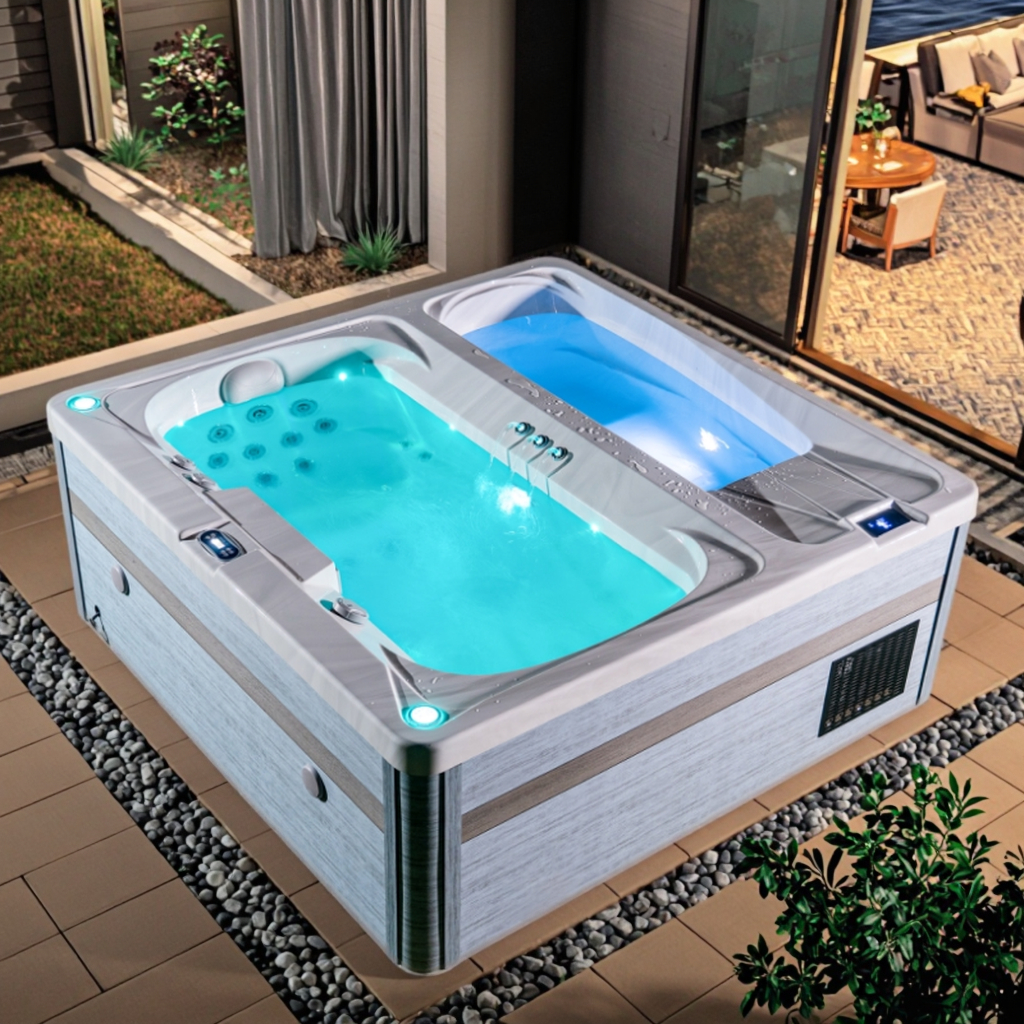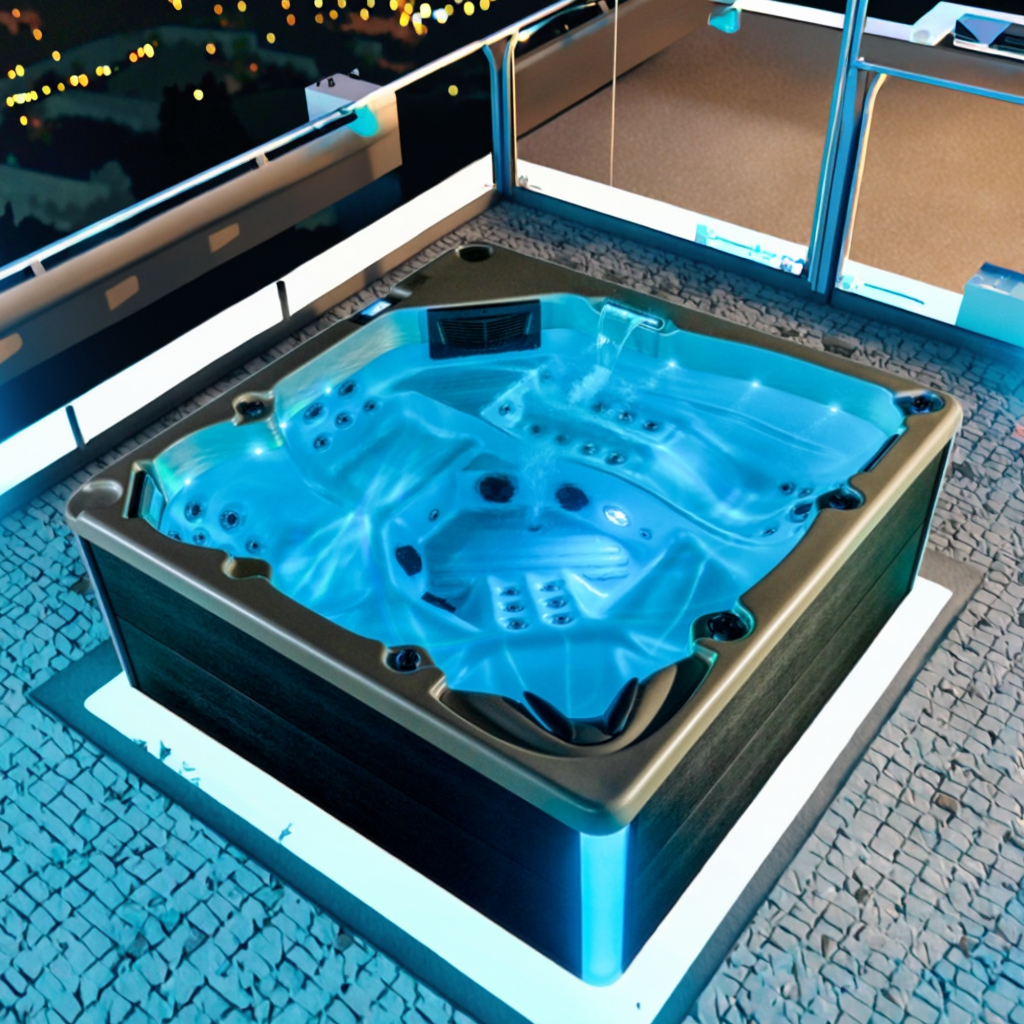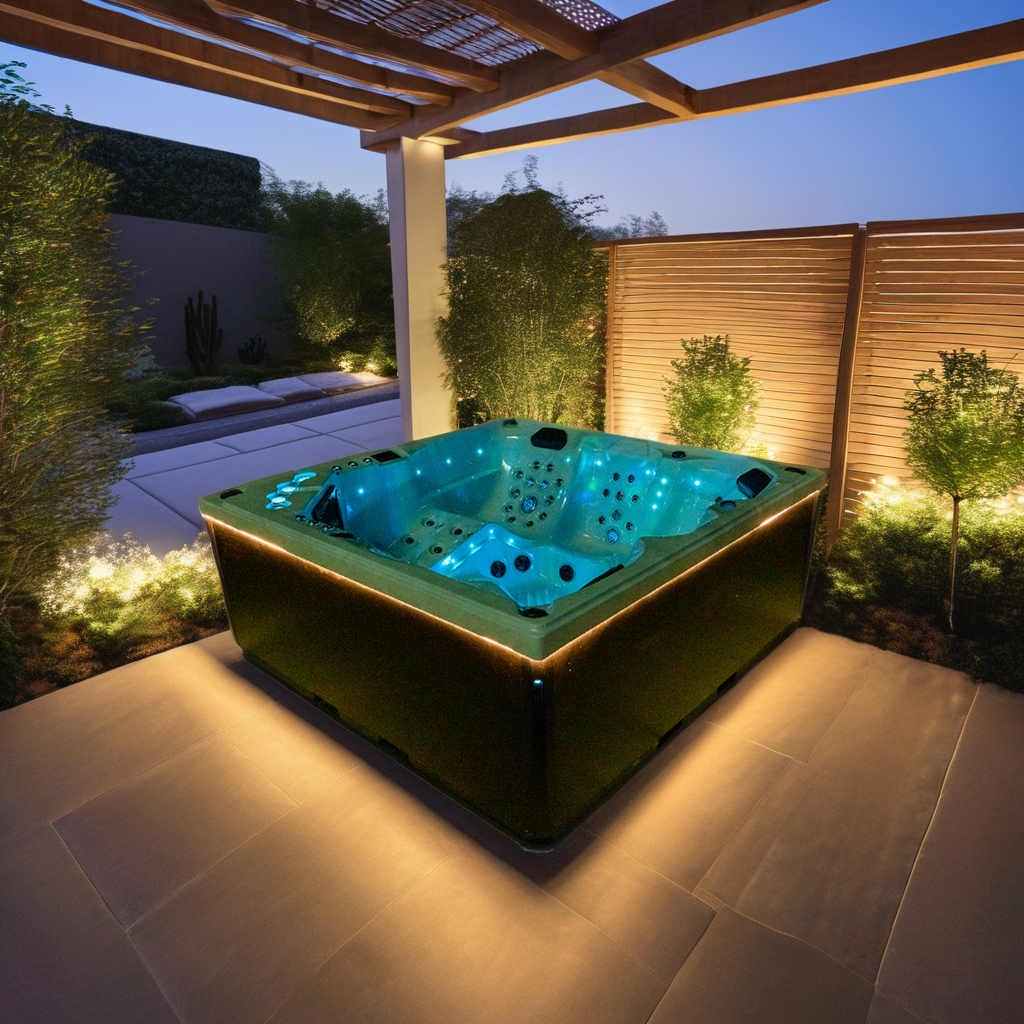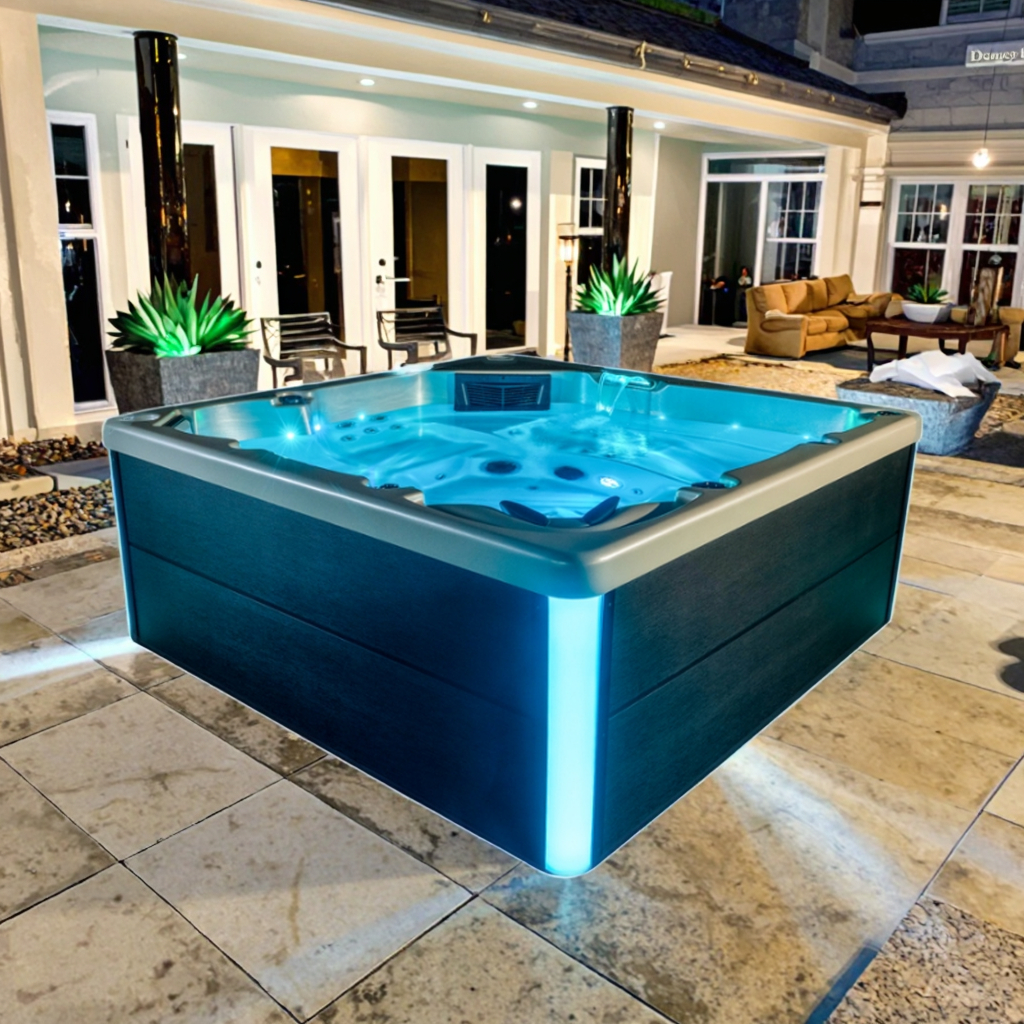
Does a Low pH Level Cause Cloudy Water in a Spa Hot tub?
2025-11-14 15:30Maintaining a spa hot tub's water balance is always a key factor affecting user experience and the equipment's lifespan. Among all water quality parameters, pH is arguably the most important chemical indicator.
Many users often wonder when they find their spa hot tub water becoming cloudy, whitish, or opaque:
"Is the low pH level causing the water to become cloudy?"
"Does a low pH level really make the water cloudy?"
This article will address this core question, delving into the relationship between low pH and water cloudiness, from chemical mechanisms to detection and repair methods, helping you scientifically understand and maintain the water quality of your spa hot tub.

What is pH? Why is it so important in a spa hot tub?
pH is an indicator of the acidity or alkalinity of an aqueous solution, ranging from 0 to 14:
• pH = 7 indicates neutral;
• pH < 7 indicates acidic;
• pH > 7 indicates alkaline.
In the daily maintenance of a spa hot tub, the ideal pH range is typically 7.2–7.8. This is the range within which human skin and disinfectants (such as chlorine or bromine) maintain optimal balance.
If the pH is too low (below 7.0), it means the water is more acidic, leading to various problems. Many users have noticed that when the pH is consistently low, the water not only irritates the skin and eyes but may also become cloudy or whitish. This is not accidental but a result of chemical reactions.
Does a low pH really cause cloudy water?
The answer is: yes, and the reason is quite scientific.
While many people believe that cloudy water usually originates from high pH (leading to calcium precipitation or carbonate buildup), low pH can also trigger a series of chain reactions that cause the water to become cloudy.
Let's break down this process.

How does a low pH make the water in a spa hot tub cloudy?
When the pH value decreases, the acidity of water increases, disrupting the chemical balance and primarily triggering the following mechanisms:
1. Metal Corrosion and Precipitation
In a low pH environment, metal components such as copper, iron, and stainless steel will corrode. Dissolved metal ions enter the water, forming colored or fine particles. When these metal ions combine with other compounds in the water (such as carbonate or hydroxide ions), tiny precipitates are formed, causing the water to appear turbid, whitish, or greenish.
Symptoms:
• Water appears pale yellow, green, or grayish-white;
• Blue-green scale may appear on surfaces or walls;
• Abnormal filter color.
2. Disruption of the Chemical Balance of Disinfectants
Low pH accelerates the chemical decomposition of chlorine or bromine, reducing their bactericidal effect. At this time, bacteria and organic matter in the water cannot be decomposed in time, resulting in microbial residue and organic pollution, thus making the water turbid, smelly, or containing suspended solids.
In summary: Low pH does not directly cause turbidity, but rather indirectly leads to cloudy water through a combination of factors: metal leaching, disinfectant inactivation, and organic matter accumulation.
3. Damage to Filter Media Efficiency
Acidic water affects the filter cartridge structure in a filtration system, causing the surface material to harden or the micropores to become clogged. Reduced filtration efficiency means suspended particles in the water cannot be effectively filtered, and long-term accumulation significantly worsens turbidity.
What other negative impacts does low pH have on spa hot tubs?
Besides causing turbidity, low pH can cause a series of more serious problems, which are detrimental to both equipment and human health.
1. Corrosion of Equipment Components
Low pH water accelerates the corrosion of metal parts, electric heating elements, nozzles, pipe joints, etc. Copper and iron ions dissolve, not only polluting the water but also potentially forming stubborn stains.
2. Damage to Acrylic or Acrylic Inner Walls
An acidic environment gradually erodes the inner coating of acrylic, causing the bathtub surface to lose its luster and even develop micro-cracks.
3. Affects Human Skin and Eyes
When the pH value is below 7.0, the water can irritate the skin's stratum corneum, causing dryness, itching, or stinging; it can also irritate the eyes.
4. Increases Chemical Instability
An acidic environment accelerates the decomposition of disinfectants and alkalinity regulators, reducing the chemical stability of the entire spa system and making water quality maintenance more difficult.

How to determine if the water in a spa hot tub is cloudy due to a low pH value?
Determining the cause of water cloudiness requires combining multiple testing indicators, not just visual observation. Here are the steps:
1. Visual Observation
• The water appears whitish, grayish, or slightly bluish-green;
• There are slight floating particles or fine particles on the surface;
• Fine sediment is visible at the bottom.
2. Test the pH value
Use pH test strips or an electronic pH meter. If the result is below 7.0, the water is acidic.
3. Check Alkalinity (TA)
When alkalinity is too low (below 80 ppm), the water's buffering capacity decreases, and the pH fluctuates more easily.
4. Check Metal Content
If the copper or iron content is high (above 0.2 ppm), it indicates that metals have been corroded by the low pH and released into the water.
5. Check Disinfectant Concentration
Low pH may lead to excessively low chlorine or bromine residue (e.g., below 1 ppm), indicating reduced disinfection efficiency.
The above steps can confirm whether the water turbidity is directly related to a low pH value.
How to correct a low pH value and make the water clear again?
Once it is confirmed that the turbidity is caused by low pH, the correct treatment method should include three steps: adjustment, cleaning, and prevention.
1. Adjust pH
• Use a dedicated pH increaser or alkalinity adjuster;
• Add in stages, avoiding excessive addition at once;
• Run the circulation system for 15 minutes after each adjustment, then test;
• Maintain the target pH between 7.2 and 7.6.
2. Adjust Alkalinity
Low pH is often accompanied by low alkalinity. Using sodium bicarbonate to increase total alkalinity, maintaining it in the 80–120 ppm range, helps stabilize pH levels.
3. Filtration and Rinsing
• Clean the filter to remove deposits affected by acidity;
• If the water is too turbid, add a clarifier as needed;
• Run the circulation system for 24 hours, then test water clarity again.
4. Replace Part or All Water If Necessary
If the turbidity is severe and there is an excessive amount of metal ions, replace 50%–100% of the water to restore chemical balance.
Why does maintaining a balanced pH level keep your hot tub clear?
When the pH, alkalinity, hardness, and disinfectant concentration of water are within recommended ranges, the chemical reactions in the water tend to stabilize:
• Metal corrosion will not occur;
• Disinfectants can effectively kill bacteria;
• Suspended particles in the water are easily captured by filters;
• The water exhibits an ideal clear and transparent state.
Simply put, pH balance = clarity + safety + comfort.
What is the difference between turbidity caused by low pH and turbidity caused by high pH?
Project | Low pH turbidity | High pH turbidity |
| Chemical causes | Metal precipitation, disinfectant failure | Carbonate precipitation, calcium deposition |
| Appearance | Whitening, greening, graying | Milky or powdery precipitate |
| Main risks | Equipment corrosion, metal contamination | Scale buildup, blockage, decreased heating efficiency |
| Handling methods | Increasing pH + stabilizing alkalinity | Lower pH + remove precipitate |
| Commonalities | All of these will affect transparency and hygiene | |
Therefore, when you find the water is turbid, you should not judge it solely by its appearance, but should immediately test the pH and alkalinity to determine the cause.

Common misconceptions about low pH causing turbidity
Misconception 1: Turbid water is always caused by high pH
Many users only know that high pH causes turbidity, but they overlook that low pH can also cause water to become turbid through indirect mechanisms such as the release of metal ions.
Myth 2: Adding a clarifying agent will solve the problem
Clarifying agents only cause suspended particles to settle; they cannot fundamentally address chemical imbalances.
Myth 3: Adding more chlorine will make the water clearer
A low pH accelerates chlorine decomposition, actually weakening its bactericidal effect. The correct approach is to adjust the pH first, then test the disinfectant concentration.
How long after turbidity appears should action be taken?
—Immediately.
In a spa hot tub, the water is part of a circulating system, and any chemical imbalance will spread rapidly. The sooner it is addressed, the easier it is to restore; leaving it untreated for several days can lead to filter clogging, heating element corrosion, and even the growth of bacterial biofilm.
How Fast Is Delivery After Deposit?
Our standard delivery time is within 30 days after the 30% deposit payment. LOVIA SPA’s factory operates efficient production lines to guarantee timely shipments for both small and bulk orders. Buyers can rely on our export logistics team to arrange smooth loading at Huangpu Port. We also offer regular updates and schedule confirmations. For special projects or urgent purchasing needs, we provide expedited production at reasonable cost.
